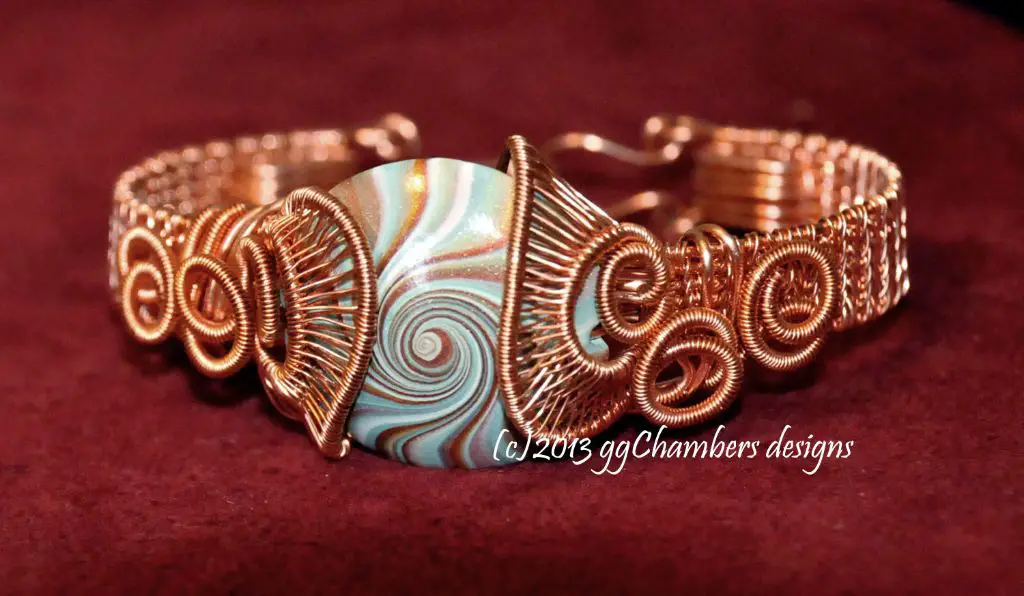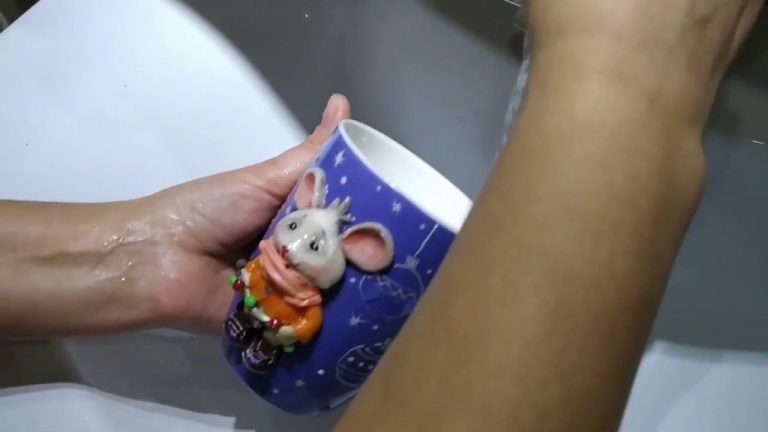How Do You Seal Clay Bead Bracelets?
Clay bead bracelets are a fun and creative way to make jewelry. They let you customize the colors, shapes, and patterns of beads on your bracelet. Many people enjoy making clay bead bracelets because they can let out their artistic side. The clay beads are light and comfortable to wear, and go with a variety of outfits.
While plain air-dried clay beads work great, you may want to seal them to make the beads more durable and water-resistant. Sealing the beads provides a protective barrier that prevents chipping, scratching, and color transfer. It also helps the beads retain their shape and not become misshapen over time. Sealed clay beads can withstand more wear and tear than unsealed beads.
Sealing your clay bead bracelets makes them more versatile for daily wear. The sealant gives them a finished look and prevents damage when you get the bracelet wet. Overall, sealing adds quality and longevity to handmade clay bead bracelets.
Materials Needed
To make clay bead bracelets, you will need the following supplies:
-
Oven-bake polymer clay – This special modeling clay can be shaped and then hardened by baking it in a regular oven. Choose a clay brand like Sculpey or Fimo in your desired colors.
-
Jewelry wire – Use a flexible beading wire or memory wire to string your beads. Look for stainless steel or nylon coated wire.
-
Crimp beads – These small metal beads will secure the ends of your beading wire. Make sure to get crimp beads that match the thickness of your wire.
-
Crimping pliers – You’ll need these special pliers to crush the crimp beads around the wire for a tight hold.
-
Jump rings – Small metal rings are used to attach a clasp or other findings to the ends of your bracelet.
Making the Clay Beads
Before you start shaping the beads, it is important to properly condition the clay so it is soft and malleable. Knead the clay for 5-10 minutes until it is smooth and free of lumps. This helps prevent cracking and breakage when shaping the beads.
Polymer clay beads can be shaped by hand or with molds. To shape by hand, roll pieces of conditioned clay between your palms into balls or teardrop shapes. Make sure beads are an even thickness throughout for proper baking. For detailed or complex designs, use clay cutters or molds. Press conditioned clay evenly into the mold cavities to ensure complete details.
Bake the polymer clay beads according to package instructions, usually at 275°F for 15-30 minutes per 1/4 inch of thickness. Bake beads in an oven with good air circulation, like a toaster oven, for best results. Allow beads to cool completely before handling.
Sources:
https://www.sculpey.com/blogs/blog/guide-to-making-polymer-clay-beads
https://cowans.org/blogs/creative-d-i-y/beads
Stringing the Bracelet
An important first step in stringing your clay bead bracelet is determining the correct length. Measure your wrist loosely where you want the bracelet to lay. Add about 1-2 inches to allow room for the clasp and dangle beads. Cut your beading wire or elastic cording to this measured length.
Use crimp beads to securely attach the wire or cord ends to the clasp. Crimp beads are small metal beads with an inner channel. Simply string the wire or cord through the crimp bead, attach the clasp, then squash the crimp bead flat using pliers to hold everything in place.
As you string beads onto the bracelet, leave at least 2 inches open at the end across from the clasp for dangling beads or charms. These help finish off your bracelet with some visual interest.
Arranging all your beads and spacers first allows you to balance the design and colors before permanently stringing everything together. Take care not to string beads too tightly or the elastic will stretch over time. Leave a little room between beads for a flexible, comfortable fit.
Securing the Clasp
Once you have finished stringing all the beads for your bracelet, it’s time to secure the ends with a clasp. The most common types of clasps for bead bracelets are lobster claw clasps and toggle clasps. Both work well to provide a secure closure for your bracelet.
To attach a lobster claw clasp, you will need a pair of pliers and some jump rings. Jump rings are simple round rings with a split in them that allow you to connect two ends. Hold the jump ring with the pliers and twist it open. Slip one end of the jump ring through the last bead on your bracelet and the other end through the loop on the lobster claw. Twist the jump ring back into a circle to close it. Repeat this on the other end of the bracelet with the other side of the lobster claw.
For a toggle clasp, you will also use jump rings to attach a bar or pendant to one end and a loop to the other. Open the jump ring and connect the bar to one end of the bracelet then close the ring. Do the same to connect the loop to the other end. The bar will slide through the loop to close the bracelet. This provides a secure closure that is a bit fancier than a basic lobster claw.
Jump rings allow you to easily attach clasps and other findings to your beaded bracelet designs. Make sure to use pliers to get the ring perfectly round again after closing it. This will ensure the smooth finish of your bracelet.
Source: How to PROTECT YOUR BEADING THREAD in a jewelry …
Sealing the Beads

Sealing the beads is an important step to help protect the clay and keep your bracelet looking its best. Polymer clay is porous, so sealing creates a protective barrier against moisture, dirt, oils from skin, and other elements that can stain or degrade the clay over time.
There are a few main options for sealers to use on polymer clay:
- Polyurethane (such as Varathane)
- Acrylic sprays and finishes
- Epoxy resin
Polyurethane is one of the most popular choices for sealing polymer clay. Varathane is a common brand of polyurethane that comes in both brush-on and spray formats.
The brush-on polyurethane will provide a thicker, more even coating compared to the spray. However, spray polyurethane is quicker and easier to apply. Both options will give a durable, protective seal on the clay beads.
When using the spray, be sure to apply multiple thin coats rather than one thick coat, to prevent drips and uneven coverage. Let the sealer fully dry between coats. Apply at least 2-3 coats for sufficient protection.
Applying the Sealer
When applying a sealer to your clay bead bracelet, it’s important to work in a well-ventilated area. Sealers and sprays can contain strong fumes, so you’ll want to avoid breathing those in. Work outside if possible, or in a garage with the door open.
Follow the directions on your specific sealer for application instructions. Often you’ll hang or lay out your bracelet and then spray a light, even coat across the beads and stringing material. Take care not to apply too much in one spot, which can lead to pooled or dripping sealer. Multiple light coats are better than one heavy coat.
Make sure to spray all sides of the beads by rotating or flipping the bracelet while spraying. Fully coat both the front and back of each bead.
After spraying, allow the sealer fully dry as directed, often at least 24 hours. Drying prevents stickiness or gumminess on the bracelet. Don’t wear or handle the beads until completely dry.
Safety Tips
When working with sealers, it’s important to take proper safety precautions. Here are some tips for staying safe:
Ensure proper ventilation when applying sealers. Work in a well-ventilated area or outdoors. Avoid breathing in fumes from sealers by wearing a protective mask. Open windows and use fans to circulate fresh air.
Be very careful when handling wet sealer. Sealers will be slippery until they fully dry, so avoid spills. Wear gloves and be cautious when moving freshly coated items. Allow adequate drying time before handling pieces.
Read and follow all safety directions from the sealer manufacturer. Use sealers in recommended amounts. Dispose of excess sealer properly according to package instructions. Keep sealers tightly closed and stored safely away from children.
Consider potential allergies or sensitivities. Opt for low-odor, non-toxic sealers when possible. Test on a small sample before fully committing to a sealer.
Wash hands thoroughly after use. Clean any spills right away. Change clothes if sealer is spilled to avoid extended contact with fumes.
Supervise children closely and assist with sealer application. Do not allow unsupervised use.
With some care and planning, sealers can be used safely. Taking precautions will help ensure a healthy crafting experience.
Caring for Sealed Bracelets
Once your clay bead bracelet has been properly sealed, there are some simple steps you can take to help extend its lifetime and keep it looking beautiful. Gentle cleaning is recommended to remove dirt and oils that accumulate on the bracelet over time.
Use a soft, damp cloth to gently wipe down the beads and strands of your bracelet. Avoid submerging the bracelet in water or using harsh cleaners, as this can degrade the sealant over time. Allow the bracelet to fully air dry after wiping it down.
Proper storage is also important. Keep your sealed polymer clay bracelets in a dry, room temperature environment away from direct sunlight. You can store them in a fabric pouch or jewelry box. Avoid storing them in very hot or humid conditions.
With proper sealing and gentle care, your handmade polymer clay bead bracelets can remain vibrant and protected for many years of wear and enjoyment.
Customizing Your Bracelets
One of the best parts about making your own clay bead bracelets is customizing them to your personal style. There are many creative ways to make your bracelets unique:
Adding charms, gems, and glitter is an easy way to decorate your bracelets. Look for small charms with holes that can slide onto the elastic cord. Glass gems and beads add color and shine. A touch of fine glitter mixed into the clay or hand-painted onto baked beads can give a magical sparkle.
Making matching sets is fun for friends or as a gift. Use the same beads, colors, and charms to create coordinating bracelets. Make them in different sizes or patterns for a collected look when worn stacked.
Color coordinating your bracelets is visually pleasing and lets you accessorize different outfits. Try alternating colors in a single bracelet or make separate ones in specific shades like all neutral, pastels, or bright rainbow hues. The color options are endless.
With limitless ways to customize your homemade clay beads, you can create unique bracelets that reflect your personal flair. Making them yourself allows for one-of-a-kind accessories you won’t find anywhere else.

